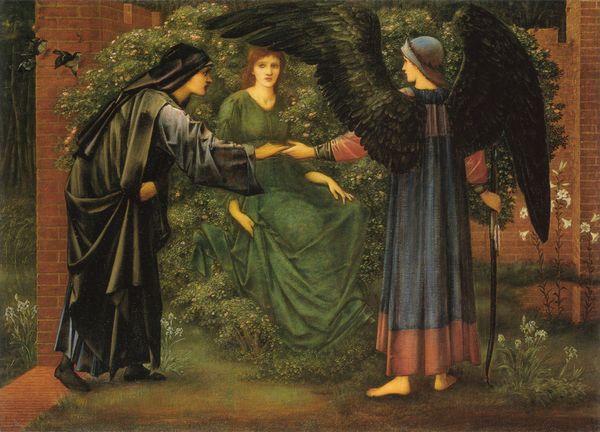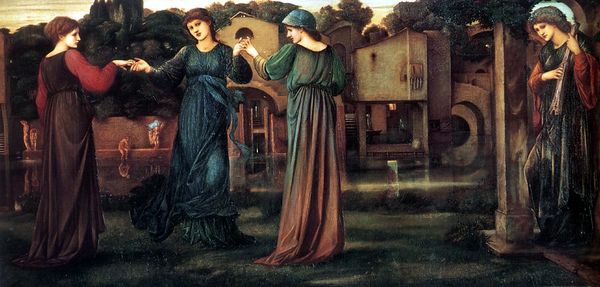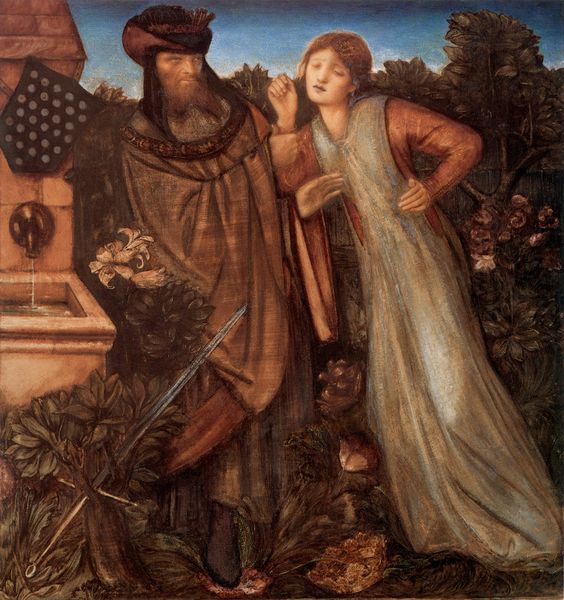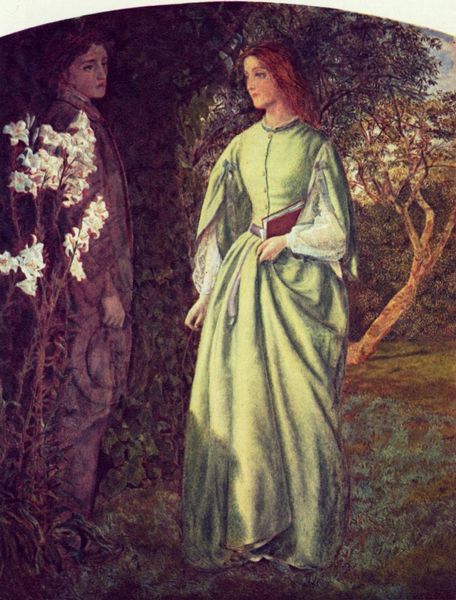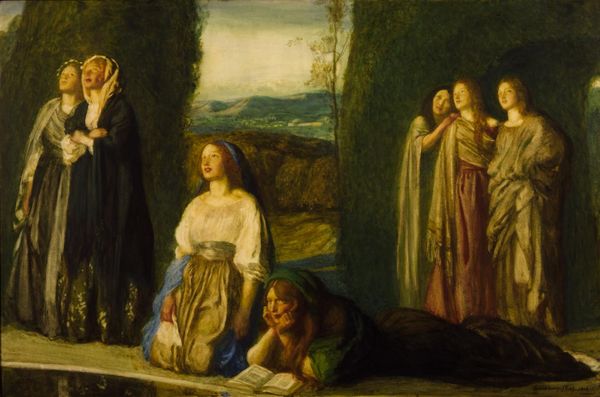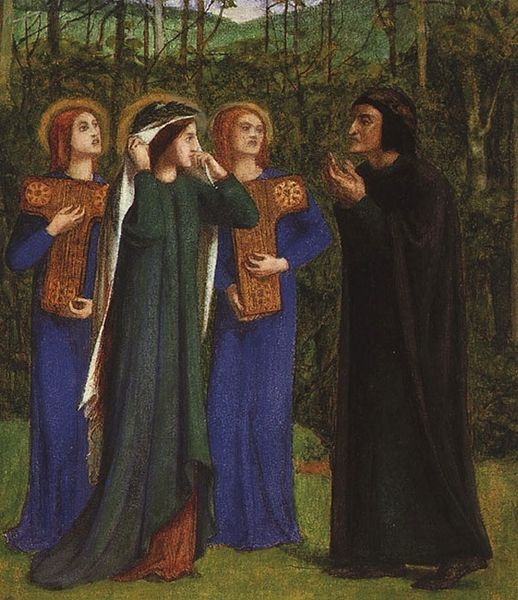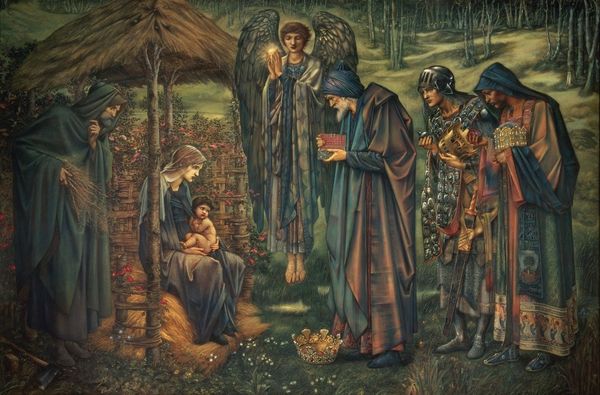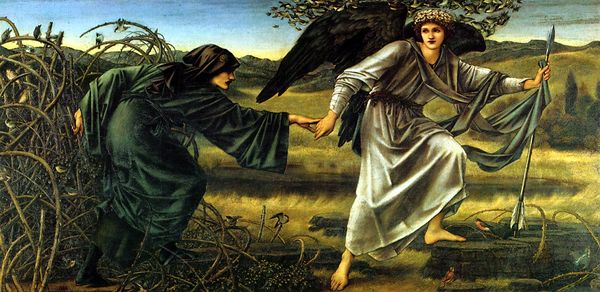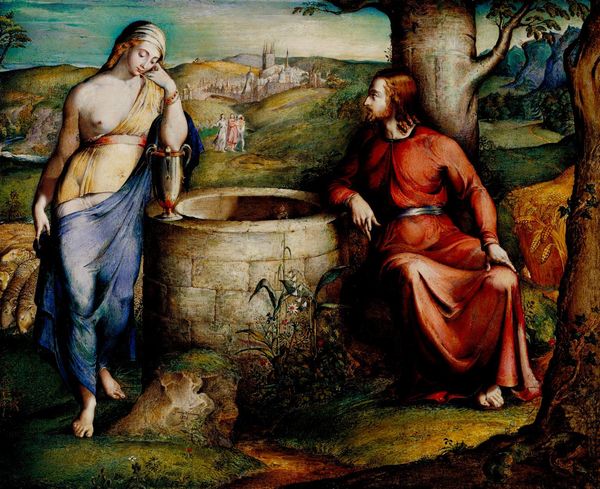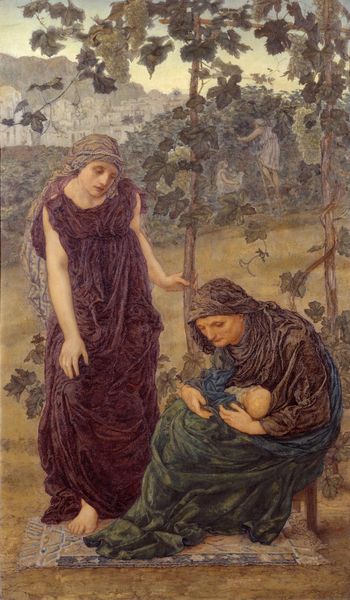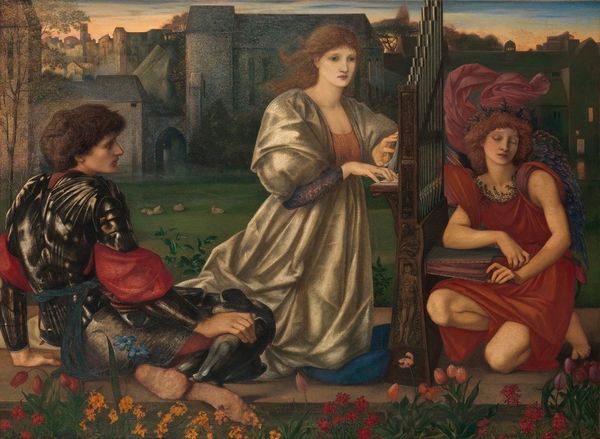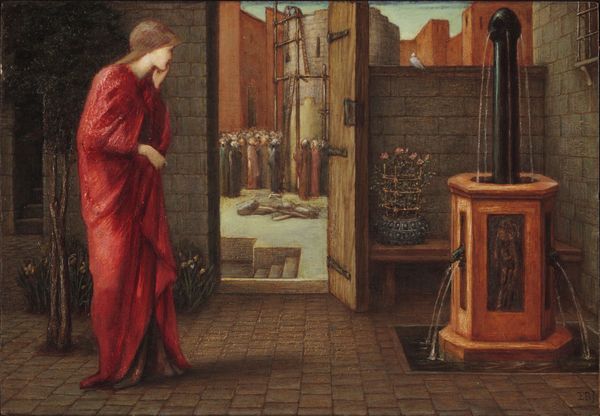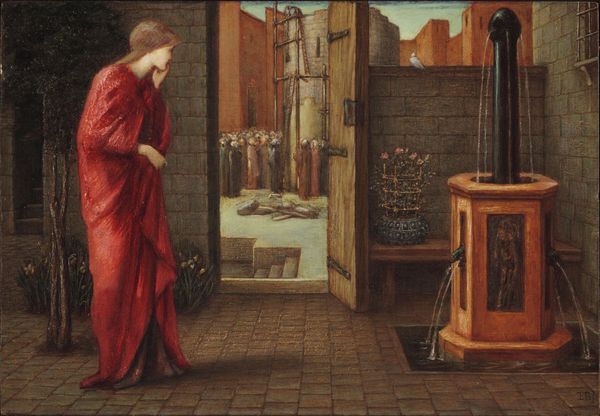
painting, oil-paint
#
portrait
#
allegory
#
painting
#
oil-paint
#
oil painting
#
mythology
#
symbolism
#
history-painting
#
pre-raphaelites
#
portrait art
#
watercolor
Copyright: Public Domain: Artvee
Curator: Edward Burne-Jones, a key figure in the Pre-Raphaelite movement, completed "The Pilgrim at the Gate of Idleness" in 1884. This oil painting presents a vivid, allegorical scene ripe with symbolic potential. Editor: My immediate feeling is a sort of subdued melancholy, even with all the vibrant greens and blues. There's a sense of longing hanging in the air. Is it about choices, missed opportunities? Curator: Precisely. The Pilgrim, dressed in simple, dark robes, stands before the Gate, an encounter which holds symbolic weight and emphasizes the dangers lurking within what the figure at the Gate offers him. Note the serene, ethereal quality of Idleness, and the flora that seems to reflect her. Editor: It’s interesting how Idleness isn't depicted as overtly monstrous or frightening. She almost looks inviting, but her very stillness suggests a kind of paralysis. The positioning of the characters is almost staged. How might this play with themes of labor and social change at the time? Curator: Burne-Jones uses the medieval style to show eternal narratives. It's interesting that you consider the positioning; that staged-like quality reminds us of early morality plays. Consider Idleness offering oblivion and stasis. The rose wreath suggests ephemeral beauty. The pool symbolizes introspection. There's the tension between worldly desires and spiritual aims. Editor: Yes, the Pre-Raphaelites were often grappling with modern anxieties, but encoding them in these medievalist, almost dreamlike scenarios. Idleness's gesture towards the Pilgrim reads as more than just an offering. The social criticism becomes obvious in how work becomes seen as divine or punishment depending on socio-economic location. Curator: Burne-Jones worked on this topic at least two more times. It shows the relevance of the symbols and subject for the painter. Even birds circling in the sky reinforce that these images communicate complex messages, encouraging multiple perspectives, despite being rooted in traditional allegorical language. Editor: "The Pilgrim at the Gate of Idleness" makes visible a timeless challenge; in my mind, it connects struggles around work with existential fears—ideas that remain intensely relevant today. Curator: Indeed, that the symbolic power in art, here very delicately rendered in paint, creates enduring and resonant emotional depth.
Comments
No comments
Be the first to comment and join the conversation on the ultimate creative platform.
